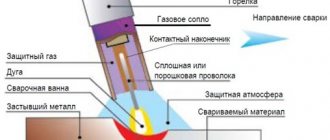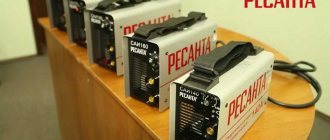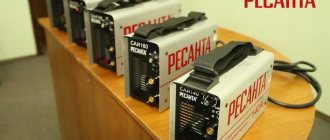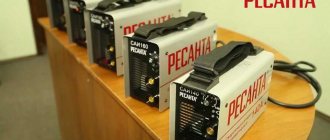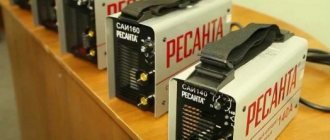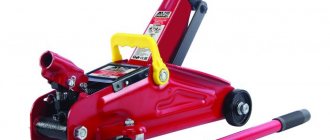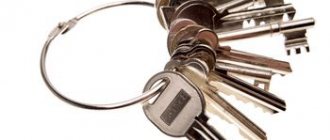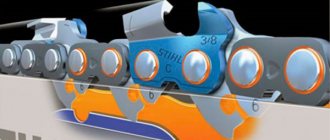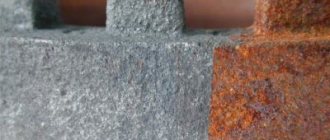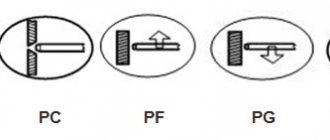The Russian land will not be depleted of talents. It will not be depleted of various historical items of varying nominal value that are interesting to amateur archaeologists. And when the talent and hobby of instrument searching are combined in one person, the result can be not only a person with a shovel and a metal detector, but also a metal detector itself.
One of these devices is the Terminator. Members of the MD4U forum, comrades Yatogan and Radiogubitel, also took part in the race. Several modifications were made, cones were filled, tons of earth were dug up. As a result, experience was born - the son of difficult mistakes, and the Terminator 3 metal detector.
Detailed instructions for the Terminator 3 metal detector with your own hands
This type of design is designed to search for coins. The process of assembling it is completely simple. However, experience in assembling such a tool is still necessary. The Terminator is able to detect an object even if the target of capture is minimal.
To begin, you should prepare the necessary equipment, namely:
- a multimeter that measures speed.
- LC meter
- Oscilloscope.
Next, you need to find a diagram broken down into nodes. Now you can make a printed circuit board into which jumpers, resistors, panels for microcircuits and other parts should be soldered in order. The next step is to clean the board with alcohol. It is definitely worth checking for defects. You can check whether the board is in working condition as follows:
- Turn on the power.
- Turn down the sensitivity control until no sound is heard from the speaker.
- Touch the sensor connector with your fingers.
- When turned on, the LED should blink and then go out.
If all actions occurred, then everything was done correctly.
Now you can make a coil. It is necessary to prepare a winding enamel wire with a diameter of 0.4 mm, which must be folded in half. A circle is drawn on a sheet of plywood with a diameter of 200 mm and 100 mm. Now you need to drive nails in a circle, the distance between them should be 1 cm. Next, you can proceed to winding the turns. At 200 mm you should make 30 of them, and at 100 - 48. Then the first coil should be soaked in varnish; when it dries, you can wrap it with thread. The thread can be removed, and by soldering the middle, you get a solid winding of 60 turns. Afterwards, the coil must be wrapped with electrical tape quite tightly. And a 1 cm foil is placed on top, this will be a screen, and more electrical tape is wound on top of it. The ends should come out.
On the second coil it is also necessary to solder the middle. In order to start the generator, you need to connect the first coil to the board. The second coil should be wrapped with a wire of 20 turns, then we connect it to the board. Now you need to connect the oscilloscope minus to minus to the board, and the plus is connected to the coil. Be sure to look at what frequency it will be when you turn it on and remember it or write it down on paper.
Now the coils need to be placed in a special mold so that they can then be filled with resin. Next, the oscilloscope is connected to the board, with the negative pole, the amplitude should reach zero. The coils in the mold are filled with resin to approximately half the depth. When everything is ready, the metal discrimination scale is adjusted.
Parts list for the Terminator 3 metal detector
As parts for the trio metal detector you will need:
- Metal film capacitors;
- SMD resistors;
- Microcircuits;
- Transistors;
- Diodes.
If you have these parts, you can assemble the Terminator Pro metal detector yourself.
Checking the device board
After soldering all the parts of the circuit, the printed circuit boards of the metal detector are checked. This is done to check the quality of soldering of the circuit and its performance.
The check is performed as follows:
- The printed circuit board of the metal detector is thoroughly washed to remove traces of flux remaining after soldering. It is advisable to remove all residues, since they can cause breakdowns and malfunctions in the future.
- The board is powered on without activating the sensor.
- The sensitivity knob is unscrewed until a stable sound signal appears from the speaker.
- To interrupt the speaker signal, simply touch the sensor connector with your finger. Interruption of the emitted sound signal when touched indicates that the metal detector board has been soldered correctly.
- The LED always blinks and goes out after turning on the power. When the power is turned off, the diode lights up and gradually fades out.
Setting up a metal detector
On the diagram of the metal detector, certain components are marked, which are taken into account, since during further assembly you will have to focus on them. This may also be necessary when setting up your metal detector.
The release of current fluctuations by the generator is carried out after connecting the transmitting coil to it. Such oscillations come out of the MC1 microcircuit in the form of a meander.
The current induced by the TX and creating the field is transmitted through the receiving coil. According to the generated field, the search coil is balanced with the TX: in other words, the RX field is subtracted from the TX field. For this purpose, a compensation coil CX is used. Depending on the sensors, its representation changes: in the case of the DD CX sensor, the coil is virtual, in the “RING” CX sensor it is real. It is connected in such a way that the direction of current movement in it is opposite to the receiving coil. Balancing RX and TX is achieved by unwinding from the compensation coil.
An oscilloscope controls the balancing, due to which the minimum amplitude is set in all positions of the handle. One end of the compensation coil is used to make a tuning loop, which is activated after the amplitude reaches a certain point, at which it begins to increase again. TX and RX must first be adjusted by frequency, while TX must be 100 Hz higher than RX. You can tune all the coils to the desired frequency by connecting them to the generator of the Terminator 3 metal detector and an oscilloscope.
There is no need to adjust the CX frequency. When a metal object appears under the sensor, the balance is upset, which provokes the flow of current into the RX, which is then supplied to the pre-amplifier and synchronization detector, which records the phases of the incoming signal and outputs them to the amplification channels. In the latter, all received parameters are amplified and fed to the MC8 comparator, which compares the received signal levels and activates the sound generator.
The operating principle of almost all metal detectors is similar to each other, with the exception of some nuances. In most cases, they affect the detuning of the device from the ground. In the case of the Terminator M metal detector, the detuning is phase.
Assembling the circuit and preparing the necessary parts
A diagram of the unit can be found on the World Wide Web, as well as a list of necessary parts. In the diagram, some elements can be indicated by “asterisks” and they can be selected through experiments so that the resulting device turns out to be improved. But for the first assembly you must strictly adhere to this scheme. Experiments can be continued at the stage of setting up the metal detector. To begin soldering parts, you must first connect the jumpers that are located near the radio components. For this purpose, it is necessary to use a varnished or insulated wire with a small cross-section. The smallest elements should be soldered near the tracks, after which it is necessary to solder the sockets intended for microcircuits and other elements that are available. The wires necessary to attach the regulation and control panels to the metal detector, mode changes, power supplies, and light/sound indicators must be routed out. You also need to find caps for the adjustment resistors. The last step requires you to remove the connector that will be needed for the sensor wires. To check if everything is working, you will need to connect a 9V battery. If the connection was correct, the LED will light up and go out. The same should happen when the device is turned off. If you touch the connector where the sensor is supposed to be installed, the sound will disappear for a while. It is also necessary to carefully check all the available control voltages that are in the circuit. For this purpose, it is necessary to enable a mode that assumes a constant voltage, which should be 20V. With a plus probe, it is necessary to measure the existing voltage that is present at the points of this circuit, and the minus probe must be applied to the minus. To make the case, a plastic box of the required size is used. It must be fixed to the device rod. Buttons and controls will need to be signed in accordance with the functionality assigned to them. Making a coil for Terminator 3 An important component of all metal detectors are search sensors. In this case, it consists of two coils located in the housing. It is through their use that metal objects will be found. To assemble the search coil for the Terminator 3 metal detector, the following parts are required:
· epoxy glue; · adhesive tape; · foil; · varnish; · threads.
· frame;
· a special wire to connect the circuit and the sensor;
·PETV winding wire having a cross-sectional size of 0.4 millimeters;
The first priority is that you will need to make a coil housing for the sensor. It is better to purchase a factory case, or one molded from ABS plastic, rather than try to produce it yourself. You can also do it yourself, but it will take a lot of time and labor. The advantages of the purchased housing are that the recess for the coils is of the required size. The rod can be made from any material that has dielectric properties. At the end of the work, you will have three coils.
Metal detector Terminator 3 - diagram and necessary components
Schematic of the Terminator-3 metal detector
| C1.1 - 330nf | c16 - 220nf | c33 - 680nf |
| C1.2 - 330nf | c17 - 220nf | c34 – 1500mf x 10v |
| C2.1 - 150nf | c18 - 220nf | c35 – 470mf x 10v |
| C2.2 - 15nf | c19 - 220nf | c36 - 470nf |
| C3 - 3.3nf | c20 — 2.2m | c37 - 1000mf x 6.3v |
| C4 - 3.3nf | c21 – 470nf | c38 – 1000mf x 6.3v |
| C5 - 1000pf | c22 - 470nf | c39 - 470nf |
| C6 - 120pf | c23 - 47nf | c40 – 1mf x 160v |
| C7 - 560pf | c24 - 47nf | c41 - 2.2mf |
| C8 - 39pf | c25 - 4.7nf | c42 - 560pf |
| C9 - 360pf | c26 - 4.7nf | c43 — 330pf |
| C10 - 1000pf | c27 - 470nf | |
| C11 - 1000pf | c28 - 470nf | |
| C12 - 4/12pf (adjustment) | c29 - 47nf | |
| C13 - 10nf | c30 - 47nf | |
| C14 - 10nf | c31 - 680nf | |
| C15 - 2.2nf | c32 - 680nf |
| R1 - 100k | r16 — 30k | r31 — 470k |
| R2 - 22om | r17 — 1k | r32 - 47k |
| R3 - 100k | r18 - 100om | r33 - 47k |
| R4 - 10k | r19 — 15k | r34 - 470k |
| R5 - 300k | r20 — 15k | r35 — 470k |
| R6 - 2.4k | r21 — 5.1k | r36 - 30k |
| R7 — 100k (changes) | r22 — 47k | r37 - 30k |
| R8 — 100k (changes) | r23 — 47k | r38 - 24k |
| R9 - 2.4k | r24 — 470k | r39 - 10k (variable Sp5-35) |
| R10 - 1.5m | r25 — 470k | r40 - 24k |
| R11 - 1.5m | r26 — 47k | r41 - 15k |
| R12 - 100k | r27 - 1k | r42 - 24k |
| R13 - 110k | r28 — 47k | r43 — 100k |
| R14 - 470k | r29 - 330om | |
| R15 – 100k | r30 — 470k |
- Mc1 - HEF4069UBP
- MC2 - HEF4069UBP
- MC3 - HEF4069UBP
- MC4 - 74HC4066N
- MC5 - HEF4069UBP
- MC6 - HEF4069UBP
- MC7 - HEF4069UBP
- MC8 - LM193N
- MC9 - KP1170EH6
- MC10 - KP1171SP64
- MC11 - TL431ACLP
- VT1 - BC327-40
- VT2 - BC327-40
- VT3 - 2SC4204
- VT4 - BC517
- VD1 - 1N4148
- VD2 - 1N4148
- VD3 - LED (any)
- VD4 - FR157 (can be omitted)
- multimeter with capacitance measurement;
- oscilloscope;
- LC meter
pechatnaya-plata-dlya-metalloiskatelya-terminator3-neskolko-versiy.rar
Search depth
Reviews left by users for the “Terminator” indicate that the maximum search depth of the metal detector exceeds that of another model, the “Asi 250” with a standard coil. Despite such assurances, in practice it turns out that according to this criterion, “Terminator” is equal to “Ace”. When searching in the air for 50 Ukrainian kopecks, the detection depth is 32 centimeters, while searching on the ground for the same coin is limited to 26–28 centimeters with reduced sensitivity. Basically, a metal detector allows you to detect objects at a depth of no more than a spade bayonet, which, however, can be a very good indicator for such a device.
The Terminator Trio metal detector cannot be classified as a device that can begin searching immediately after turning it on. The cost of the device is several times less than the cost of the new ACE 250 model, but at the same time, “Terminator” is more suitable for those seekers who want to try their hand at instrumental search.
Examples of finds
The comrade walked and walked with the Terminator. One - color signal. Two - shovel in hand, dig urgently. Three - money of 1738. Great coin, great find.
This is how the video of the already familiar channel TREASURE HUNTER NUMISMAT begins.
It is believed that other finds will follow. Let's see. This is despite the fact that the comrade does not consider modern Ukrainian coins to be finds at all. Comrade Mikhali Smolev also did not disappoint. Not only did he dig up a good amount of coins—tips and an empire, horse meat, a gold earring—he also talked about the settings in detail in his video. Let's see.
Terminator 3 metal detector coil
To begin with, you should take winding enamel with a diameter of 0.4 mm.
Fold it so that there are two ends and two beginnings. Next, you should wind from two reels at a time. Now we need to make transmitting and receiving coils; for this, two circles of 200 mm and 100 mm are drawn on a plywood sheet. Nails are driven in along these circles, the distance between them should be 1 cm. 30 turns of enamel wire are wound onto a large mandrel. Then you should apply varnish to the coil and wrap it with thread, then remove it from the winding and solder the middle. This creates one middle wire and two outer wires.
The resulting coil should be wrapped with electrical tape and a piece of foil should be placed on top, and foil again on top. The ends of the windings should go outside.
Now it’s time to move on to the receiving coil. 48 turns are already wound here. To start the generator, you need to connect the transmitting coil to the board. The middle wire is connected to the negative. And the middle terminal of the take-up coil is not used. The transmitting coil requires a compensating coil, on which 20 turns are wound.
We connect the oscilloscope to the board like this: a probe with a minus to the minus of the board, and a plus probe to the coil. Be sure to measure the frequency of the coils and write it down.
After connecting the coils according to the diagram, they must be placed in a special container and filled with resin. The oscilloscope now sets the division time (10 ms and 1 volt per cell). Now you should reduce the amplitude to zero. We wind the turns until the volt value reaches zero. We make a compensating loop at the coil, which will be outside.
The mold should be filled halfway with resin. When everything hardens, you need to connect the oscilloscope and bend the loop inward. Then twist it until the amplitude value becomes minimal. Afterwards, you need to glue the loop, check the balance, and now you can fill the second half of the container with resin. The reel is ready for use.
Metal detector coil repair
Before you begin the repair, you should prepare the following tools:
- Stationery knife;
- Incandescent lamp;
- A container for glue, preferably flat;
- Special or epoxy resin;
- Medium and fine sandpaper;
- Small spatula.
First of all, you need to dry the coil using an incandescent lamp. And use a utility knife to widen the cracks on it. Squeeze the glue onto a flat surface and mix with a spatula. Apply this substance to the coil. In places of cracks, you can apply more resin. Now you should wait until it all hardens thoroughly. And then sand it, using first medium and then fine sandpaper. This procedure will help smooth out all the unevenness. In this fairly simple way, you can revive the oldest coil from a metal detecting device.
Here you can find diagrams for self-assembly of the following models of metal detectors:
| Metal detector Kid FM and Kid FM-2 | |
| Principle of operation | Electronic frequency meter FM |
| Metal discrimination | yes (Black and all others) |
| Maximum search depth | 0.6 meters |
| Programmable microcontrollers | There is |
| Operating frequency | 19 kHz |
| Difficulty level | elementary |
| Metal detector PIRATE | |
| Principle of operation | PI (pulse) |
| Metal discrimination | No |
| Maximum search depth | 1.5 meter |
| Programmable microcontrollers | No |
| Operating frequency | — |
| Difficulty level | elementary |
| Metal detector CHANCE | |
| Principle of operation | PI (pulse) |
| Metal discrimination | There is |
| Maximum search depth | 1 meter |
| Programmable microcontrollers | There is |
| Operating frequency | — |
| Difficulty level | average |
| Metal detector Clone PI | |
| Principle of operation | PI (pulse) |
| Metal discrimination | No |
| Maximum search depth | 2.5 meters (Depends on coil size) |
| Programmable microcontrollers | There is |
| Operating frequency | — |
| Difficulty level | average |
| Metal detector Clone PI AVR | |
| Principle of operation | PI (pulse) |
| Metal discrimination | No |
| Maximum search depth | 2.5 meters (Depends on coil size) |
| Programmable microcontrollers | There is |
| Operating frequency | — |
| Difficulty level | average |
| Metal detector Clone PI W | |
| Principle of operation | PI (pulse) |
| Metal discrimination | No |
| Maximum search depth | 2.5 meters (Depends on coil size) |
| Programmable microcontrollers | There is |
| Operating frequency | — |
| Difficulty level | average |
| Metal detector Quasar | |
| Principle of operation | I.B. |
| Metal discrimination | There is |
| Maximum search depth | 1-1.5 meters (Depends on the size of the coil) |
| Programmable microcontrollers | There is |
| Operating frequency | 4 - 17 kHz |
| Difficulty level | Average |
| Metal detector Quasar ARM | |
| Principle of operation | I.B. |
| Metal discrimination | There is |
| Maximum search depth | 1-1.5 meters (Depends on the size of the coil) |
| Programmable microcontrollers | There is |
| Operating frequency | 4 - 16 kHz |
| Difficulty level | Average |
| Metal detector Sokha 3TD-M | |
| Principle of operation | I.B. |
| Metal discrimination | There is |
| Maximum search depth | 1 - 1.5 meters (Depends on the size of the coil) |
| Programmable microcontrollers | There is |
| Operating frequency | 5 - 17 kHz |
| Difficulty level | Average |
| Metal detector Fortune | |
| Principle of operation | I.B. |
| Metal discrimination | There is |
| Maximum search depth | 1 - 1.5 meters (Depends on the size of the coil) |
| Programmable microcontrollers | There is |
| Operating frequency | 4.5 - 19.5 kHz |
| Difficulty level | Average |
| Metal detector Fortuna PRO-2 | |
| Principle of operation | I.B. |
| Metal discrimination | There is |
| Maximum search depth | 1 - 2 meters (Depends on the size of the coil) |
| Programmable microcontrollers | There is |
| Operating frequency | 4.5 - 19.5 kHz |
| Difficulty level | High |
| Metal detector Fortuna M2 and M3 | |
| Principle of operation | I.B. |
| Metal discrimination | There is |
| Maximum search depth | 1 - 2 meters (Depends on the size of the coil) |
| Programmable microcontrollers | There is |
| Operating frequency | 4.5 - 19.5 kHz |
| Difficulty level | High |
| Metal detector Fortunam M | |
| Principle of operation | I.B. |
| Metal discrimination | There is |
| Maximum search depth | 1.5 - 2 meters (Depends on the size of the coil) |
| Programmable microcontrollers | There is |
| Operating frequency | 7 - 16 kHz |
| Difficulty level | High |
| Metal detector TERMINATOR-3 | |
| Principle of operation | I.B. |
| Metal discrimination | There is |
| Maximum search depth | 1 meter (Depends on coil size) |
| Programmable microcontrollers | No |
| Operating frequency | 7 - 20 kHz |
| Difficulty level | High |
Low battery indication
There are often cases when the operator, carried away by the search for “treasures”, does not notice the discharge of the battery. To prevent this from happening, an MC 10 microcircuit is soldered into the device board. Its terminals are connected to the power supply of the metal detector. The signal wires are soldered to an LED, which is embedded in the panel of the MDT 3 control unit.
When the battery charge is lost, the LED begins to blink, then when the capacity decreases by 80%, the light begins to light constantly. In this case, the battery is charged.
Additional Information. Factory-made MDT 3 costs from 7 to 15 thousand rubles. In a home workshop, manufacturing a metal detector of this model will cost a maximum of 3 thousand rubles.
Setting up detector discrimination
Set switch SA2 to the non-ferrous metal detection position. The ferrite cut-off indicator is 40–50 kOhm. We balance the ground regulator in the specified range. If the cutoff indicator is at 0–40 kOhm, then we increase the capacitance to C2. With an indicator of 50 - 100 kOhm - capacitance to C1. The value of the discrimination control should be zero, so we set it to its extreme position. To test the Terminator 3 detector, non-ferrous metal and ferrites are used. If, when the latter is brought up, a double sound signal occurs, and the detector reacts to a non-ferrous metal with a single signal, then the task is completed correctly. In the opposite situation, you should change the outputs on the TX coil.
The next step is to adjust the visibility of the entire spectrum of metals. By decreasing capacitance C1, a shift is made to the foil, and a decrease in C2 is shifted to aluminum
It is important to achieve visibility of all metals, as well as cut off ferrite at 40 - 50 kOhm. Capacitor C12 is used for additional tuning
Setting up the Terminator 3 metal discrimination scale
The correct setting is as shown in the table below:
| Number | Discrimination procedure |
| 1 | Cigarette foil |
| 2 | Gold |
| 3 | Coins (modern rubles) |
| 4 | 20 kopecks USSR |
| 5 | 3 kopecks USSR |
| 6 | Lead |
| 7 | Sleeves |
| 8 | Silver |
| 9 | 5 kopecks USSR |
| 10 | Aluminum plugs |
| 11 | Aluminum |
Note!
Copper should not be cut! First, after balancing, we check that the connection is correct.
The metal discrimination knob is at zero, the ground balance knob is in the middle position, the sense knob is adjusted, the mode switch is in the “color only” position. Take a piece of ferrite 1x1cm and some copper part. We turn on the device and first wave the ferrite over the sensor, then the copper. There should be a double beep for ferrite, and a single beep for copper. If it’s the other way around, then we swap the ends on the TX. It’s best to take several targets from different non-ferrous metals, because the device can’t always react to copper - it’s not configured yet. Essentially, the general point of checking the correct connection comes down to the fact that A single signal should sound for a colored target, and a double signal for a piece of ferrite. If this is the case, then the coils are turned on correctly. Next, set the BG knob to 40 Kohm, the discrimination knob to 0 Kohm, and set the non-ferrous metal scale. This is done by adding or reducing the capacity of loop capacitors. Depending on where we add or reduce the capacitance (on TX or RX), the phase “window” into which our scale should fall will shift in one direction or another. If we reduce the capacitance on TX, the “window” moves towards low-conducting metals (towards foil), if on RX, the “window” moves towards highly conductive metals, such as copper. In general, we look at the table and, based on the fact that “ sees” your device after balancing, we figure out where we should add contour connectors (on the TX or on the RX). We ensure that all non-ferrous metals listed in the table are visible, and a piece of ferrite is cut out at the BG handle position of approximately 40 Kom. Capacitors C5 and C12 also move this “window” a little, but we adjust them more subtly. We set C5 - 10nf and don’t touch it anymore, C12 is first set to the maximum amplitude on leg 12 of the preamplifier (MC2), and then with the position of C12 after the main setting we achieve a more accurate and final setting of the metal scale. That’s basically the whole setup. Its target detection range and correct discrimination will depend on the quality of the setup work you’ve done, so approach this matter responsibly. The Terminator 3 metal detector is quite complicated to manufacture and set up, its creation will require some effort. However, a carefully and correctly assembled device will delight you with the quality of its work and pleasant findings. Terminator 3 works on par with branded metal detectors of the mid-price category, and its creation by hand is relatively inexpensive. Video on how to make Terminator 3 with your own hands:
—>
For a long period of time, this unit has been one of the best among homemade devices for detecting metal. Over the years, this device has been modernized more than once, resulting in new modifications of the metal detector. With this device you can only find gold or non-ferrous metals - this will depend on the selected setting. Making a Terminator 3 metal detector with your own hands will not cause any difficulties at all, but to do this you must follow the instructions below.
Homemade metal detectors
All metal detectors in this section will be quite technologically advanced. They will have good search characteristics. And a well-assembled homemade metal detector is not much inferior to its factory-made counterparts. Basically, various circuits of pulse metal detectors and circuits of metal detectors with metal discrimination are presented here.
But to make these metal detectors, you will need not only desire, but also certain skills and abilities. We tried to break down the diagrams of the given metal detectors by level of complexity.
In addition to the basic data required to assemble a metal detector, there will also be information about the required minimum level of knowledge and equipment for making a metal detector yourself.
To assemble a metal detector with your own hands, you will definitely need:
This list will contain the necessary tools, materials and equipment for self-assembly of all metal detectors without exception. For many schemes you will also need various additional equipment and materials, here are just the basics for all schemes.
- Soldering iron, solder, tin and other soldering supplies.
- Screwdrivers, pliers, wire cutters and other tools.
- Materials and skills for making a printed circuit board.
- Minimum experience and knowledge in electronics and electrical engineering as well.
- And also straight hands will be very useful when assembling a metal detector with your own hands.
Circuit diagram of a metal detector with metal discrimination
You can make a metal detector with metal discrimination yourself using the circuit for the Chance pulse device. The process of making a coil is quite simple.
The diagram itself can be found on the Internet. But still, experience in assembling such devices will be useful. Assembling the metal detector should begin with the board.
After the board is manufactured, the microcontroller needs to be flashed. And at the end of the work, we connect the metal detection device to the power supply.
However, in order for the equipment to work, a coil is required. It is best if it has low parasitic capacitance. The winding enamel wire is wound onto a reel. And then you can connect it and check the functionality of the metal detector. It is imperative to make a body and a rod for it. And you can start working.
DIY metal detector without microcircuits
Homemade equipment can be made without complex microcircuits, but using a simple transistor generator. The metal detector will be non-discriminatory. It will detect objects in the ground to a depth of 20 centimeters, and in dry sand - to a depth of 30 centimeters. In this device, the transmitting and receiving coils operate simultaneously.
Metal detector circuit
By design, the Terminator 3 metal detector is a standard coin detector, which has undergone some changes that allowed it to detect gold and ignore other non-ferrous metals. When using a circuit with a special “all metals” mode, the device can search for any scrap metal. The standard scheme allows a metal detector to search for coins, nothing more.
The non-standard use of logic as an op-amp is the basis of the metal detector circuit. The disadvantage of this is unnecessary noise and unknown CG of all microcircuits. Of course, it is possible to use domestic logic to create a device, but this risks having too wide a spread of parameters. You can reduce damage and avoid additional problems by replacing the audio chip with a domestic analogue.
Comparison with other models
When compared with other homemade products, Terminator 3 is a much more advanced device than Koschey or Pirate. But it loses to the digital Quasar ARM in terms of performance, depth, and convenience.
Assembling this device is much more difficult than all three of the above, this must also be understood.
Among the serial ones, Tesoro metal detectors are ideologically close to the Terminator - only old school, only hardcore.
Let's look at a comparison of the Terminator with a grater - Minelab X-Terra 705. Comrade Andrey Kozinsky got confused, made the right test stand and tested a bunch of Terminators. Spoiler: the branded device was not always better.
Pros from the channel Original metal detectors conducted an honest test - a comparison with the 400th ICQ - Garrett Ace 400ii. Judging by the number of dislikes, Garrett owners were offended by the test. Let's see.
Setting up the Terminator metal detector
The first task is to equalize the frequency. To do this, connect the wire of the TX winding to the contact of the connecting wire, and then to the minus of the board. We connect the oscilloscope to the board according to the “minus to minus” principle. We connect the probe with a plus sign to the coil terminal. We write down the obtained values. We perform a similar procedure for the RX coil. Ideally, the receiving coil is 100 Hz below the transmitting coil frequency. The adjustment is made using parallel connected 500 pF capacitors to C1.
Next, you should balance the coils. The windings are placed in the housing and connected according to the following diagram:
We connect the RX-coil and the CX with a reserve, which will allow for tuning in the future. After connecting the oscilloscope, set the time to 10 ms and the volt to 1 V. The adjustment is carried out in order to obtain the smallest amplitude. You should be prepared to frequently unsolder the CX coil lead to reduce the number of turns. After reaching the specified parameter, we move on to the next value and repeat the procedure until we obtain the minimum frequency at the lowest volt/division.
Next comes filling in the diagram. For this, epoxy adhesive is used, the performance characteristics of which are suitable for solving the problem. The board should be filled in such a way that the adjustment loops of the CX and RX elements can be used. After drying and checking with an oscilloscope, changing the position of the loops helps to adjust the values. Having installed the latter in the ideal position, we fix the loops without moving them. Superglue will do. Repeated checking allows you to proceed to completely filling the coil with glue.
Technical characteristics of MD Terminator-3
MD Terminator-3 is a powerful metal detector capable of detecting metal objects at long distances in the ground and under water. The device can also recognize metal in a monolith of various materials (concrete, brickwork, wood, etc.).
Technical characteristics determine the capabilities of the Terminator metal detector in searching for various metals, depending on their volume and depth. The main parameters of the device include the following characteristics:
- detection depth;
- discrimination;
- ground balance.
Detection depth
This parameter is the most important for the device. The high sensitivity of a metal detector determines the effectiveness of its use. The device with a ø 240 mm coil is capable of recognizing the following objects at a maximum distance:
- modern coin with a face value of 5 rubles. – 240 mm;
- Catherine five kopeck coin – 300 mm;
- army helmet – 800 mm.
Discrimination
This option allows you to distinguish between types of metal. In the discrimination mode, the device can be tuned to certain groups of metals, cutting off the detection of other chemical elements. At the same time, the Terminator metal detector has an “All metals” mode setting.
Ground balance
Metal objects falling into the electromagnetic field emitted by the MD distort it. The control unit analyzes the changes and provides information in verbal form. In addition, the soil layer also introduces its share of distortions. The degree of imbalance depends on the mineralization of the soil. To cut off false pulses, the metal detector has a built-in Ground Balance option. In MD Terminator 3 (MDT 3), ground balancing occurs automatically.
Setting Discrimination
Setting up the discrimination scale .doc To set up discrimination, start the non-ferrous metal detection mode. The discrimination control must be in the zero position. Then turn the knob clockwise until it stops.
One by one, bring a piece of metaferrite color to the sensor. The device should respond to ferrite with two signals. For non-ferrous metals alone. If everything is so, then the sensor is working correctly.
Checking the device board Checking the device board is carried out using an oscilloscope. If you cannot check the metal detector circuit at home, contact a radio workshop. Everything will be done there in an hour.
Repair features
If the treasure hunter made his own metal detector, then he also assumed the warranty obligations for it. And he carries the control unit to himself for any repairs. This applies equally to rods and reels.
Purchase block - you need to look here. Usually a good seller offers support - warranty and post-warranty. Samodelkin, who decided to make extra money in the small-scale production of metal detectors, is unlikely to refuse a consultation. And my friend Kulibin, after his consultation, will replace the dead part or exchange it for a more suitable one.
Operational repairs at the mine are the same for all metal detectors. Carrying a roll of blue electrical tape with you is not stressful, and it will do a whole lot of good. You can tie a reel to the rod by the broken ears, and splice the rod itself using a stick, branch, fishing rod - as long as there is non-conductive material.
Read also: Fisher F75: detailed review, comparison with other models, field videos and owner reviews
Making MDT 3 with your own hands
Creating a metal detector with your own hands begins with its diagram. The schematic arrangement of radio components is most often copied on the Internet.
The plan for connecting parts into a single electrical system for the Terminator is shown in the figure below.
MDT scheme 3
Making a circuit board
To assemble the metal detector control unit, you will need to make a circuit board. By following the guide, you can quickly and accurately make an installation site with your own hands.
Instructions for making the board:
- On the Internet, choose a photo of a printed circuit board.
- The printer prints the drawing in full size.
- The paper is glued onto a piece of PCB.
- Along the perimeter of the pattern, the textolite is cut with a hacksaw.
- An awl is used to mark the mounting locations for radio components.
- Punctures are drilled with a mini drill.
- Carefully cut out all current-carrying areas with a scalpel or a suitable cutter.
- The paper is removed from conductive branches and areas of the board.
- Bare areas are covered with paint.
- Remove the remaining pieces of paper. To do this, just wet it and wipe it off with a rag.
- The metallized surface is etched with a special solution for printed circuit boards.
- The board is finally cleaned with a cloth soaked in solvent.
Circuit board
Important! When following the instructions, you must be very careful. When cutting tracks, do not allow parts of the metallized coating to separate from the board.
Otherwise, the circuit will malfunction or fail altogether.
This completes the manufacturing of the circuit board. Proceed to the installation of the MDT 3 control unit circuit.
Assembling the circuit and selecting parts
Before you begin assembling the metal detector circuit, you need to select all the components of the circuit board. To do this, take a detailed list of parts for the MDT 3 control unit online.
Complete list of circuit parts
Assembly begins with soldering the jumpers. SMD resistors and panels for microcircuits are soldered in. Then the control wires and other radio components are soldered. For a variable resistor, it is better to use a multi-turn resistor.
Soldered circuit board
At the end of the work, you need to check the quality of the soldering and the correct installation of the radio components. The MC 10 chip is needed to indicate the battery charge level. It costs quite a lot. At the discretion of the home craftsman, you can refuse to install MS 10.
Top view of the board
The finished circuit is inserted into the control unit housing. Plastic handles are placed on the axis of the resistors and switch. The terminals of the block are connected to the coil (sensor) of the metal detector.
Components of the MDT 3 sensor
The metal detector sensor is a circle, around the perimeter of which two circuits of wound enameled wire ø 0.4 mm are laid. The circuits are the transmitting TX and receiving RX coils. As a bed for wires, improvised dielectric material is used.
When balancing the device, the coils are rotated in a circle relative to each other. Once the adjustment is complete, the turns of the radial conductors are tightly wrapped with thread. Then the coating is impregnated with varnish.
Terminator 3 assembly
All components of the metal detector are placed on a rod no more than 1.2 m long. The length of the lever should not be convenient
Particular attention should be paid to securely fastening the sensor disk
The control unit with the battery is installed in such a way that a person can simultaneously change the operating modes of the device without interrupting the search process.
A horizontal handle is cut into the bar just above the block for easy grip with your hand. You can cut an elbow support from a plastic pipe and attach it to the bar.
Note! An orthopedic crutch with an armrest is used as a guide rod. A sensor circle is attached at the bottom, a control unit with a battery is installed in the middle part of the rod
Everything that is needed for a comfortable position of the operator’s hand is already on the crutch.
Control Panel
Making a circuit board
To make the circuit board of the Terminator 3 metal detector on your own, you need to complete
the following sequence of actions: - Search on the Internet for a photomontage board of the Terminator M metal detector. - Print out the image on a printer in full size. — Gluing paper onto a piece of PCB. — Cutting the PCB around the perimeter with a hacksaw. — Marking places for fastening parts with an awl. — Drilling punctures. — Cutting out current-carrying areas. — Removing paper from conductive branches. — Painting with bare paint. — Removing remaining paper. — Etching of the metallized surface. — Final cleaning of the board.
Assembling the circuit and selecting parts
Before you begin assembling the Terminator M metal detector, you should select all the components for the circuit board according to the parts list for the control unit for this type of device. The assembly procedure for the Terminator Trio metal detector begins with jumpers. Then resistors and panels for microcircuits are soldered. Next, the wires for the radio components are soldered. At the end of the process, make sure that the soldering is done efficiently and that the radio components are installed correctly. Insert the device control unit into the finished circuit. Place plastic handles on the switches, as well as on the resistor axes. Connect the terminals of the block to the sensor.
DIY metal detector sensor
Before starting work, it is necessary to prepare a device that will accurately measure capacitance and inductance. Now you should take the housing for the reel and make PCB inserts into the ears. Pieces of fabric are used for compaction. The upper surface of the ears should be sanded. The fabric must be impregnated with epoxy resin. When everything is dry, you should sand everything and insert a sealed lead-in, thus making grounding. Next you need to apply a special Dragon varnish.
Now windings are made, which are tied with threads. All windings are placed in a coil and capacitors are glued. Everything can be connected and configured. A housing is required for pouring. Mandatory: there should be no metal nearby. After pouring, the epoxy should be sanded and dried thoroughly. The sensor is suitable for the Terminator 3 and Terminator 4 metal detectors, which are the most popular models of devices.
https://youtube.com/watch?v=Y-tWFi1iMOI
DIY metal detector Clone PI W
In essence, this is a cheaper version of the professional finder Clone PI-AVR, only instead of an LCD display, a line of LEDs is used. This is not as convenient, but still allows you to control the depth of artifacts.
Of course, there is also a printed circuit board layout for this solution, only the control buttons are placed on a separate panel.
Programming ATmega8 is a topic for a separate article; if you have worked with such controllers, no difficulties will arise.
The powerful Clone PI W metal detector, made by yourself, allows you to find metal no more than a meter deep, although without discrimination.

